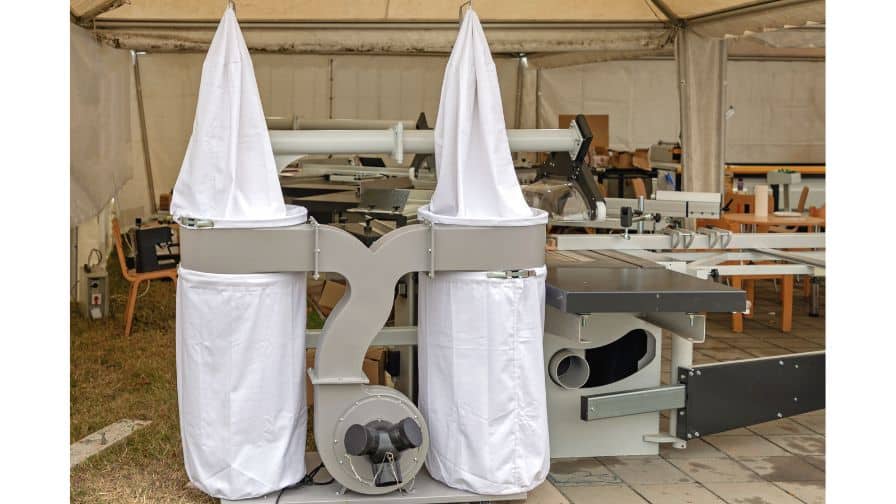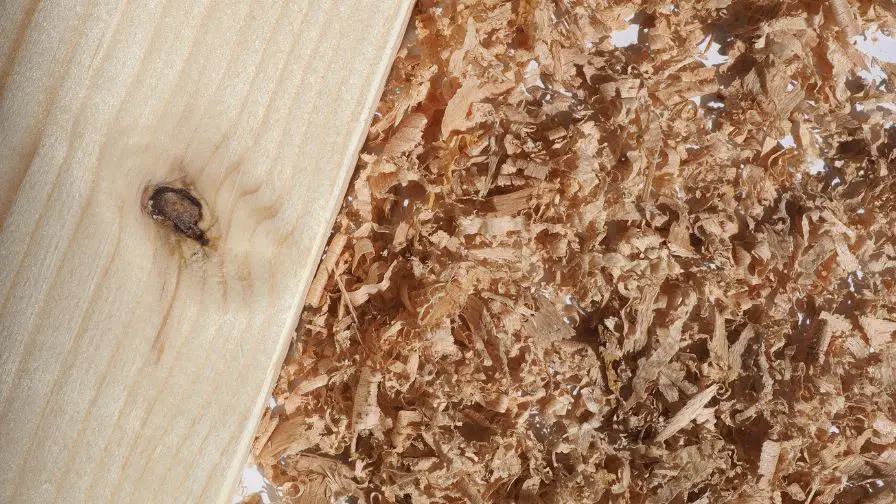
One of the most important decisions you’ll make when setting up your dust collector is whether to vent it outside or keep it inside. There are pros and cons to both options, and it can be tough to decide which is right for your shop.
In this blog post, we will discuss venting your dust collector outside and help you make the decision that’s right for you!
Should I Vent My Dust Collector Outside?
Yes you should consider venting your dust collector outside into a collection container.
In order to make the decision there are a few things to consider when deciding whether or not to vent your dust collector outside.
The first is the climate. If you live in an area with high humidity, it’s probably not a good idea to vent your dust collector outside. The second thing to consider is the size of your shop. If you have a small shop, venting your dust collector outside may not be feasible. The third thing to consider is the type of dust you’re collecting. If you’re collecting fine dust, it’s probably best to vent your dust collector outside.
If you decide to vent your dust collector outside, there are a few things you need to do to ensure that it’s done safely. First, you need to make sure that the exhaust pipe is properly vented. Second, you need to make sure that the area around the exhaust pipe is clear of any flammable materials. Third, you need to make sure that the exhaust pipe is properly grounded.
Venting your dust collector outside can be a great way to reduce the amount of dust in your shop. However, it’s important to do it safely. Make sure you take the time to consider all of the factors before you make your decision.
What Is A Dust Collector And What Does It Do?
A dust collector is a machine that helps to remove particles of dust, dirt, and other airborne contaminants from the air.
These machines are often used in industrial and commercial settings, where they can help to improve air quality and prevent the spread of harmful particles.
Dust collectors typically work by drawing in air from the surrounding area and then passing it through a series of filters. The filters trap the dust particles and remove them from the air before the clean air is released back into the room.
Subscribe to Myers Woodshop on YouTube
How Do You Decide Whether To Vent Your Dust Collector Outside Or Keep It Inside Your Shop?
There are a few factors you’ll need to consider before making your decision. The first is the weather. If it’s cold outside, you’ll need to make sure your dust collector is properly insulated so the heat from your shop doesn’t escape. You’ll also need to factor in the noise level of your dust collector. If it’s too loud, it could be a disturbance to your neighbors.
The second factor is the size of your shop. If you have a small shop, you might not have enough space to vent your dust collector outside. In this case, you’ll need to keep it inside and make sure you have good ventilation so the dust doesn’t build up too much.
The third factor is the type of dust you’re collecting. If it’s hazardous, you’ll need to vent it outside so the fumes don’t build up inside your shop. However, if it’s not hazardous, you can vent it either inside or outside depending on your preference.
So, should you vent your dust collector outside? It depends on your specific situation. Consider the factors mentioned above and make the best decision for your shop.
RZ Mask M2 Face Masks for Woodworking, Home Improvement, Construction and DIY Projects

Click Here To Check The Price On Amazon
Pros And Cons Of Venting Your Dust Collector Outside
Let’s take a look at the pros and cons of venting your dust collector outside.
One pro of venting your dust collector outside is that it will help keep your shop clean. By venting the dust collector outside, you won’t have to worry about the dust collecting inside your shop.
Another pro of venting your dust collector outside is that it will help reduce the noise level in your shop. If you vent the dust collector outside, the noise will be directed outside of your shop and away from you.
There are a few cons to consider as well.
One con is that you will need to have a way to vent the dust collector outside. This means that you will need to have a duct or hose that goes from your dust collector to the outside.
Another con is that you may not be able to vent the dust collector directly into your shop’s exhaust fans. You will need to consult with a local HVAC contractor to see if this is an option for you.
Overall, there are both pros and cons to venting your dust collector outside. You will need to weigh the pros and cons and decide what is best for you and your shop.
DUST COLLECTION – Basics and Setup
Subscribe to Lincoln St. Woodworks on YouTube
Can I Enclose My Dust Collector?
Yes you can enclose your dust collector, but you probably don’t want to. An unenclosed dust collector will do a better job of collecting dust and debris, and it will be less likely to overheat. If you must enclose your dust collector, make sure to provide adequate ventilation.
Another option is to vent your dust collector outside. This is a good option if you live in a dry climate and your dust collector is located near an exterior wall. Just be sure to seal any openings around the ductwork to prevent air leaks.
Does A Dust Collector Need A Cyclone?
No your dust collector doesn’t need a cyclone, but there are some benefits to using one.
A cyclone will increase the overall efficiency of your dust collector by up to 30%. This means that your dust collector will be able to handle more volume and will need to be emptied less often. Additionally, a cyclone will help to prolong the life of your dust collector by preventing the filter from getting clogged.
So, should you use a cyclone with your dust collector? If you have the space and the budget for it, we say go for it! Just know that it is not necessary.
How Do You Get Sawdust Out Of The Air?
A dust collector is a great way to get sawdust out of the air.
These are larger machines that are designed to remove large amounts of dust from the air. Dust collectors can be used for both small and large projects.
To use a dust collector, you must first attach it to your saw. The dust collector will have a hose that attaches to the saw. Once the dust collector is attached, it will need to be turned on.
The next step is to start your saw. As the saw is running, the dust collector will begin to collect the sawdust. The dust will be collected in a bag or canister that is attached to the dust collector.
Once the job is complete, you can turn off the dust collector and empty the bag or canister. Dust collectors are a great way to keep your work area clean and free of sawdust.




